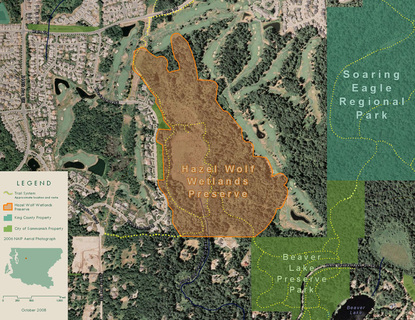Wood Duck Nesting Project
|
Since 2008, Skyline High School students have periodically assisted with a cavity duck nesting project at the Hazel Wolf Wetland Reserve. Our project focuses on the wood duck (Aix sponsa).
We visit the wetland twice a year. In the fall, we remove the previous seasons nests and prep the boxes for the next nesting season. We bring the abandoned nests back to the class to determine egg laying success. We determine which species of birds laid eggs and whether or not the eggs hatched successfully. If the eggs did not hatch, we estimate the development of the embryo. In the spring, we make sure all the boxes are still camouflaged and install data collection probes. The data collected from the probes has been used for an extended essay report (pdf) correlating the nesting box temperature with the number of eggs laid and hatched in the box. If you plan on joining us in the wetland, please print and sign this liability waiver (doc). |
